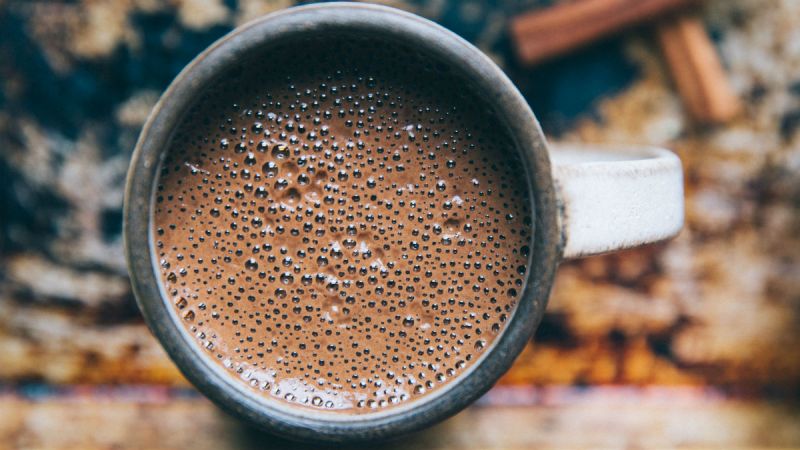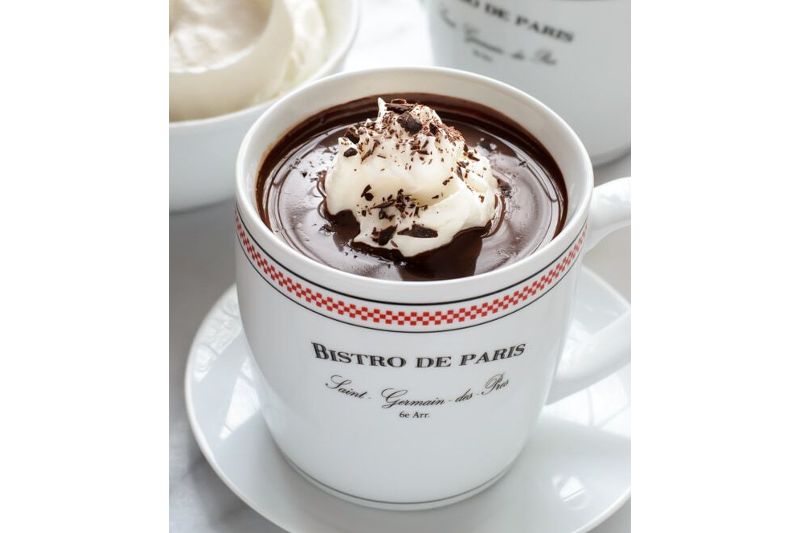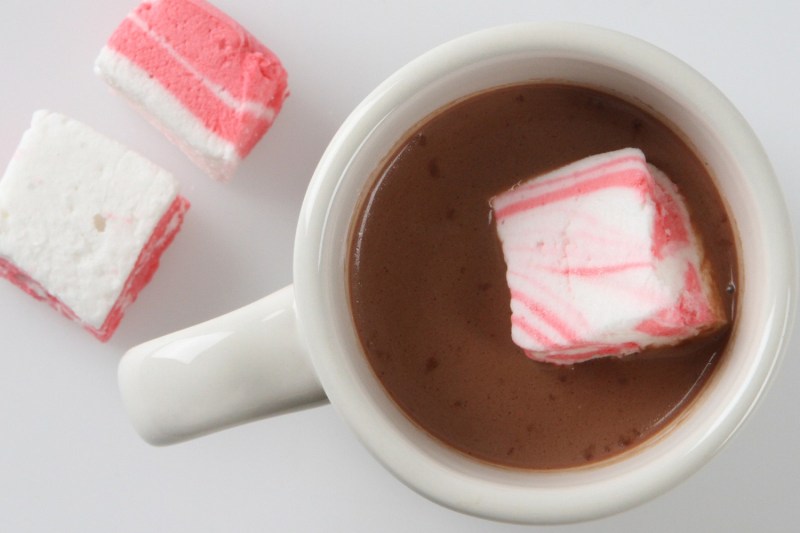They may sound a lot of like and constantly get conflated, but hot cocoa and hot chocolate aren’t the same things. They’re both extremely tasty, especially come winter, but the general makeup of each is a little different.
Kinda like Pinot Gris and Pinot Grigio or a stout beer compared to a porter, the differences can be small, but important as they add up. Chocolate is the driving force in both categories here, with the real separator being one version that’s a little more authentic, and one that’s a little more about convenience. Here’s what to know.
Is it hot cocoa or hot chocolate?
Chances are good that you’re more familiar with hot cocoa, whether you call it that or not. This is a more popular version, made from cocoa powder and so often in packet form for efficiency’s sake. It tends to be creamy and quite sweet, although it can be adjusted to your liking depending on what you’re adding. In a pinch, you throw in hot water. For more delicacy, you might steam some milk or even mix in some oat milk or a dash of cream.

Genuine hot chocolate involves real chocolate, typically in the bittersweet bar form, melted down and hit with things like vanilla, whole milk, or even a punch of espresso or black coffee. The key here is high-quality chocolate from the get-go, with a high cacao percentage as you’re striving for flavor here, not necessarily sweetness. Besides, if a candied version is really what you’re after, you can always doctor up the finished product. Purists will also add that you would almost never add water to a real hot chocolate, as it dilutes the stuff.
How long has hot chocolate been around?
It goes way, way back. The Mayans, practically the godfathers of all things cacao, were known to drink it as far back as 500 BC. It continues to be wildly popular today, especially during the winter. Think of hot cocoa as the natural byproduct of the industrial revolution and advancements in cooking and processing techniques. It’s like the TV dinner version of hot chocolate, easy to prepare and pretty satisfying. And to be honest, that’s selling it a bit short because while hot cocoa involves cocoa powder at its core, there are some higher-end options out there to use as your base.
If we’re going for a decadent, complex mug filler, our vote goes to hot chocolate. No offense Swiss Miss, we love you all the same, but we like more of a house-made kinda drink. Here’s a great recipe to get you in the mood. And while you’re at it, think about complementary flavors, like coconut or the dark fruit notes or a good brandy or aged rum, as you play around.
Hot chocolate recipe

We like this French-inspired hot chocolate recipe from Well Plated. It mixes up some quality chocolate with milk, cream, and sugar — all you need for maximum enjoyment.
Ingredients
- 8 ounces bittersweet chocolate at least 70%, chopped (Godiva or Trader Joe’s is suggested)
- 1 1/2 cups whole milk
- 1/2 cup heavy cream
- 2 teaspoons powdered sugar
- 1/2 teaspoon espresso powder
Method
- In a medium saucepan over medium heat, whisk together the whole milk, heavy cream, powdered sugar, and espresso powder until small bubbles appear around the edges. Do not allow the mixture to boil.
- Remove from saucepan from the heat and stir in the chopped chocolate until melted, returning the sauce to low heat if needed for the chocolate to melt completely. Serve warm, topped with lots of whipped cream.
Hot cocoa recipe

Hot cocoa, in its essence, is simply the simpler version of hot chocolate. It should be easy to make but also plenty satisfying, per this Epicurious recipe. The pinch of salt seals the deal, as far as we’re concerned. And throw some mint candy in as a garnish for good, festive measure.
Ingredients:
- 2 tablespoons unsweetened cocoa powder
- 1 to 2 tablespoons sugar
- 1 cup milk or any combination of milk, half-and-half, or cream
- 1/4 teaspoon vanilla extract
- 1 pinch of salt
Method:
- Whisk together the cocoa, sugar, salt, and about 2 tablespoons milk in a small saucepan over medium-low heat until cocoa and sugar are dissolved. Whisk in the rest of the milk and heat it over medium heat, whisking occasionally, until it is hot. Stir in the vanilla and serve.
- If you like it frothy, blend it in the blender. Add salt to taste.
Now that you know what separates the two hot drinks, it’s time to decide which you like more. Whip up a batch of each and put them to the test. Even if it’s a tie, chocolate is involved so everybody wins.



